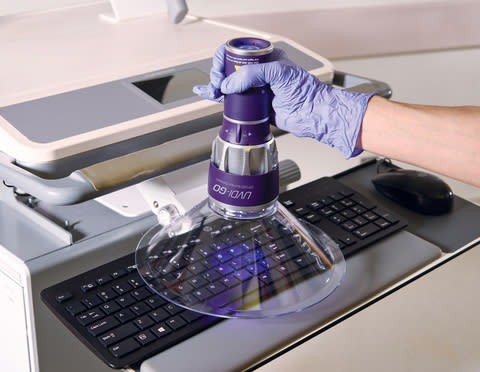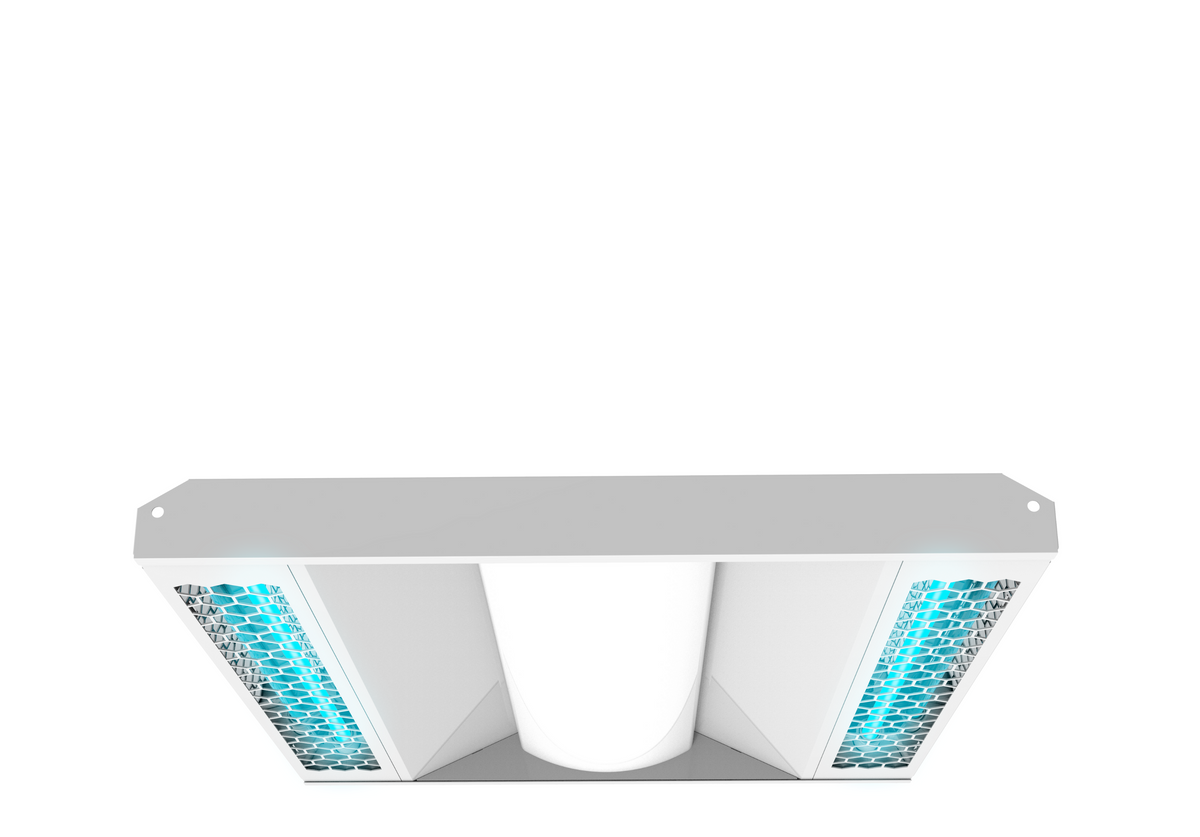UV Surface Disinfection Demystified: Understanding the Science Behind the Service
Exploring UV Sanitation: A Necessary Tool in the Battle Against Dangerous Virus
As the globe faces an ever-increasing danger from dangerous virus, the look for effective methods of disinfection has become an urgent priority. While standard cleansing methods have actually shown some success, there is a growing recognition that we require to explore cutting-edge approaches to battle these invisible adversaries. One such method that has gathered significant attention is UV disinfection. Harnessing the power of ultraviolet light, this modern technology has demonstrated appealing outcomes in eliminating a vast array of pathogens. Yet just how does it function? What are the advantages? And where can it be applied? In this discussion, we will dig right into the world of UV disinfection, uncovering its possible as a crucial tool in the battle versus damaging virus.
Just How Does UV Disinfection Job?
UV sanitation functions by making use of ultraviolet (UV) light to get rid of damaging virus and prevent their spread. This extremely reliable technique entails using UV radiation to disrupt the DNA and RNA of bacteria, providing them unable to replicate and causing their supreme devastation.
When UV light is used for disinfection, it is generally released from a lamp or bulb that produces a specific wavelength of UV-C light. uv surface disinfection. This wavelength, ranging from 200 to 280 nanometers, is especially efficient at permeating the outer cell wall surface of bacteria, infections, and various other microorganisms. Once inside the cell, the UV radiation targets and harms the hereditary product, avoiding the microbe from causing and replicating infection
UV sanitation systems are designed to release the ideal strength and period of UV light to make certain reliable microorganism elimination. The dose of UV light required for disinfection relies on variables such as the kind of bacterium, its resistance to UV radiation, and the particular application. Additionally, the system should be very carefully crafted to make certain proper direct exposure of the target pathogens and to avoid any possible harm to humans or the setting.
The Benefits of UV Disinfection
UV disinfection offers a plethora of advantages in effectively getting rid of unsafe pathogens and minimizing the danger of infection. Unlike conventional disinfection methods that depend on chemicals, UV sanitation makes use of ultraviolet light to ruin the DNA and RNA of bacteria, making them not able to duplicate and trigger infections.
An additional substantial advantage of UV disinfection is its effectiveness in killing a large range of pathogens. UV light has been confirmed to effectively remove bacteria, viruses, fungis, and protozoa, including those that are resistant to standard disinfectants. This broad-spectrum effectiveness makes UV sanitation a functional device in various settings, such as medical care facilities, water treatment plants, and food processing markets.
In enhancement to its efficiency, UV sanitation also provides rapid disinfection cycles. Unlike various other methods that require extended contact times or repetitive applications, UV disinfection can attain significant microorganism decrease in a matter of seconds. This quick and efficient process allows for improved performance, lowered downtime, and increased general functional efficiency.
Moreover, UV sanitation is a non-contact approach, which indicates that it does not require straight physical contact with the surfaces or objects being sanitized. This feature makes it ideal for usage on fragile tools and sensitive products that may be damaged or affected by other disinfection techniques.
Applications of UV Disinfection in Healthcare

UV disinfection is also used in the sterilization of clinical devices and instruments. In addition, UV sanitation is made use of in water treatment systems within medical care facilities.
Moreover, UV sanitation innovation is employed in the disinfection of healthcare uniforms and personal protective devices (PPE) By utilizing UV light, health care experts can ensure that their uniforms and PPE are complimentary from microorganisms, protecting against the transmission of infections between people and health care workers.
UV Disinfection in Public Spaces
Public areas are increasingly implementing UV disinfection technology as a critical action to fight the spread of hazardous pathogens. With the continuous global pandemic and the constant danger of infectious diseases, the need for effective disinfection techniques in public areas has actually ended up being critical. UV sanitation supplies a efficient and reliable option in this regard.

UV sanitation systems make use of ultraviolet light to deactivate the DNA and RNA of germs, infections, and various other pathogens. This procedure disrupts their ability to duplicate and make them harmless. These systems can be installed in various public spaces, including cooling and heating systems, escalators, lifts, and surface sanitation robotics. Making use of UV sanitation innovation in public rooms not only assists in lowering the danger of infection but also instills confidence amongst the public regarding their safety and security.
As public rooms proceed to adapt to the obstacles posed by transmittable diseases, UV sanitation innovation plays an essential function in guaranteeing a tidy and safe atmosphere. By implementing such measures, public spaces can successfully mitigate the spread of dangerous microorganisms and add to the overall wellness of the area.
The Future of UV Sanitation Modern Technology
As the demand for boosted disinfection techniques proceeds to find more info expand in response to the continuous worldwide pandemic and the continuous danger of infectious illness, the future of UV sanitation technology holds promising advancements in making certain much more reliable and efficient virus obliteration in various settings.

One location of improvement is the development of more compact and portable UV sanitation tools. These gadgets would certainly enable easier and more versatile implementation in a selection of setups, such as workplaces, schools, and transportation systems. In addition, improvements in automation and robotics are being explored to improve the efficiency and efficiency of UV disinfection procedures. This consists of making use of autonomous robotics outfitted with UV-C lights to browse and disinfect large areas swiftly and precisely.
Another area of exploration is the use of UV sanitation in air filtration systems. By incorporating UV-C lights right into cooling and heating systems, air-borne microorganisms can be properly counteracted, reducing the threat of transmission in indoor settings.
In addition, scientists are checking out using UV disinfection in food processing centers to make sure the safety and top quality of foodstuff. UV-C light has been discovered to be efficient in getting rid of foodborne microorganisms, providing a chemical-free alternative to conventional sanitation methods.
Final Thought
Finally, UV sanitation is a vital device in the battle against harmful virus. Its effectiveness in killing microorganisms, infections, and various other microorganisms makes it a valuable innovation in medical care settings and public areas. With its ability to offer a ecologically friendly and chemical-free technique of disinfection, UV modern technology holds wonderful prospective for the future. Its extensive application can add to the avoidance of infections and the enhancement of public health and wellness.
UV sanitation systems are created to release the ideal strength and period of UV light to make certain reliable virus removal. The dosage of UV light needed for sanitation depends on elements such as the kind of bacterium, its resistance to UV radiation, and the specific application. Unlike conventional sanitation techniques that count on chemicals, UV sanitation utilizes ultraviolet light to damage the DNA and RNA of microbes, rendering them unable to reproduce and create infections.In enhancement to its efficiency, UV disinfection additionally supplies rapid sanitation cycles. One of the visit our website main applications of UV disinfection in medical care is in the disinfection of patient rooms and operating cinemas.